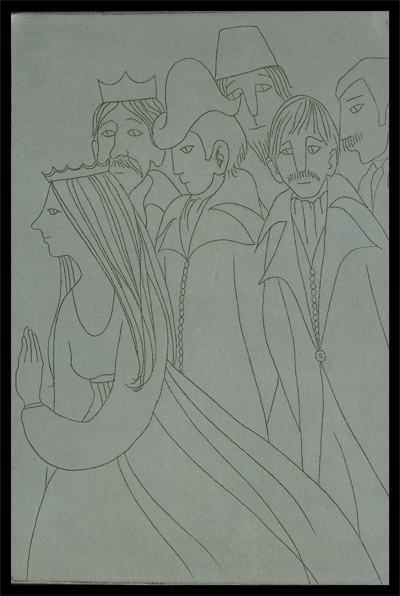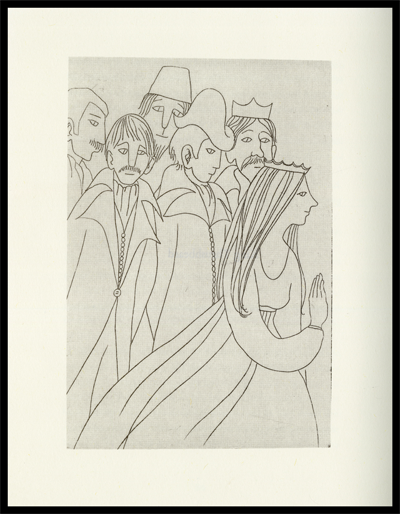

Etching for Nonny Hogrogian’s About Wise Men and Simpletons (1971)


About Wise Men and Simpletons is a collection of twelve Grimm’s Brothers tales including classics like Rapunzel, Rumplestiltskin and Hansel & Gretel. The Caldecott Award winning artist, Nonny Hogrogian, illustrated the book with a series of etchings for each story. (Image 1) Etching is an ancient printmaking technique originating around the 15th century. This technique uses acid to incise into the surface of a metal plate of copper, zinc, or iron. First, the surface of the plate is covered by a layer of wax and the artwork is then drawn into this layer with a stylus exposing the metal underneath. After the artwork is completed, the plate is then dipped into acid. Acid eats into the metal creating incisions that will hold ink in the printing process. The longer the plate is exposed to the acid, the wider the incisions become. The wider the incisions become, the heavier the lines on the plate are. The wax layer is then removed with a solvent revealing the etched artwork. The plate can then be used to duplicate the hand drawn artwork onto paper. (Image 2)
The de Grummond Children’s Literature Collection holds all 21 plates used in this title. Featured is the plate illustrating the story of King Thrushbeard on page 90. The plates measure 16.5cm x 11cm.
To view this item, please visit the de Grummond Children’s Literature Collection in the McCain Library & Archives Reading Room on the 3rd floor. If you have any questions, please contact Brooke Cruthirds at
Text by Brooke Cruthirds, Assistant Curator of The de Grummond Children’s Literature Collection.